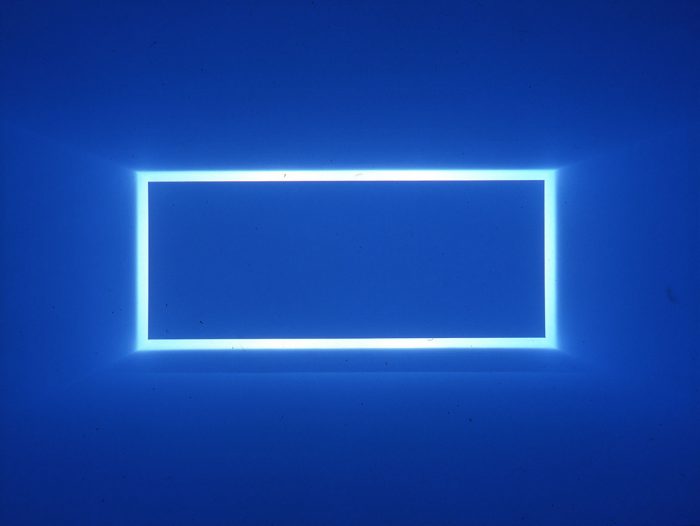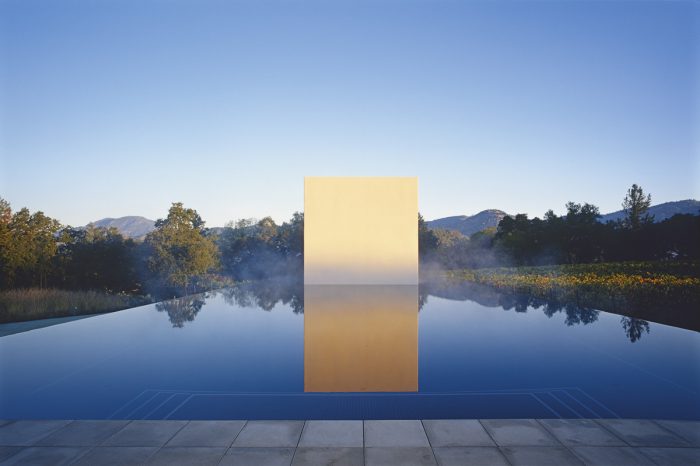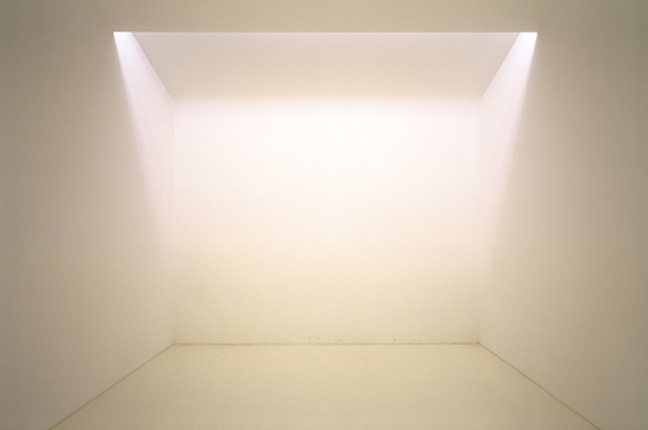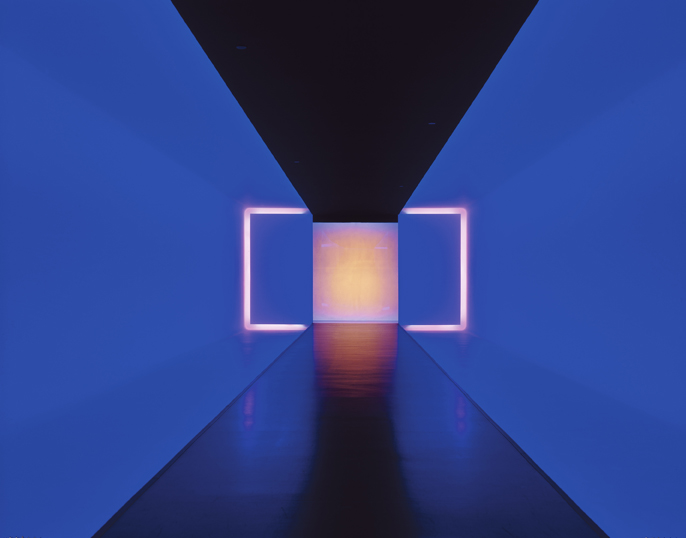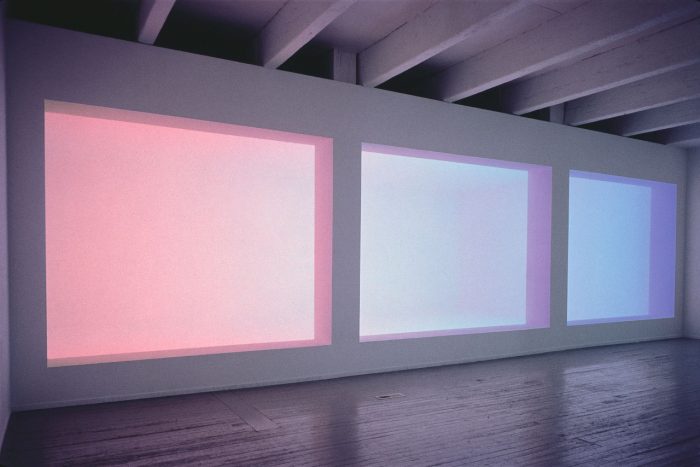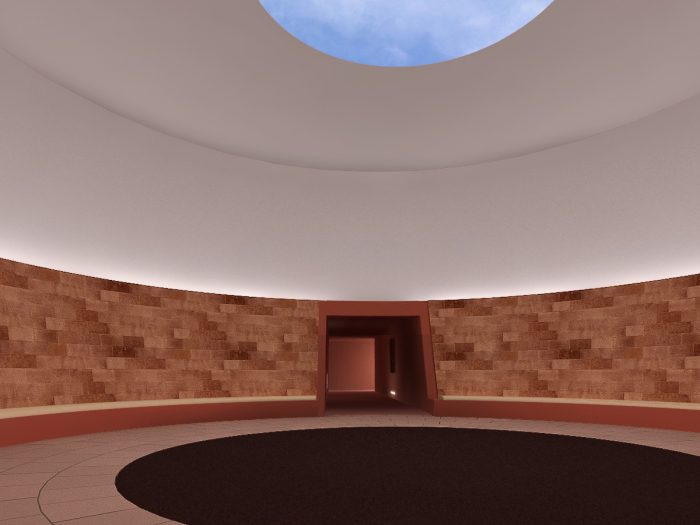
- Permbajtja
- prev
- next
- prev
- next
HIGHLIGHT JAMES TURRELL
This week we introduce to an exceptional artist which his work focuses on exploration of perception, light color and space : James Turrell ! A true source of inspiration for many artist even in the music industry such as Drake and even here Elvana Gjata.

©2021 James Turrell
For over half a century, the American artist James Turrell has worked directly with light and space to create artworks that engage viewers with the limits and wonder of human perception. Turrell, an avid pilot who has logged over twelve thousand hours flying, considers the sky as his studio, material and canvas. New Yorker critic Calvin Tompkins writes, “His work is not about light, or a record of light; it is light — the physical presence of light made manifest in sensory form.”
My work is more about your seeing than it is about my seeing, although it is a product of my seeing. I’m also interested in the sense of presence of space; that is space where you feel a presence, almost an entity — that physical feeling and power that space can give.
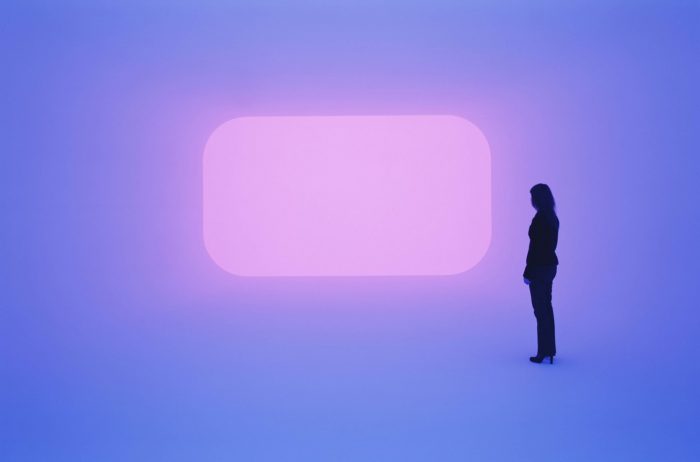
photo by Florian-Holzherr,©2021 James Turrell
Informed by his training in perceptual psychology and a childhood fascination with light, Turrell began experimenting with light as a medium in southern California in the mid-1960’s. The Pasadena Art Museum mounted a one-man show of his Projection Pieces, created with high-intensity projectors and precisely modified spaces, in 1967. Mendota Stoppages, a series of light works created and exhibited in his Santa Monica studio, paired Projection Pieces with structural cuts in the building, creating apertures open to the light outside. These investigations aligning and mixing interior and exterior, formed the groundwork for the open sky spaces found in his later Skyspace, Tunnel and Crater artworks.
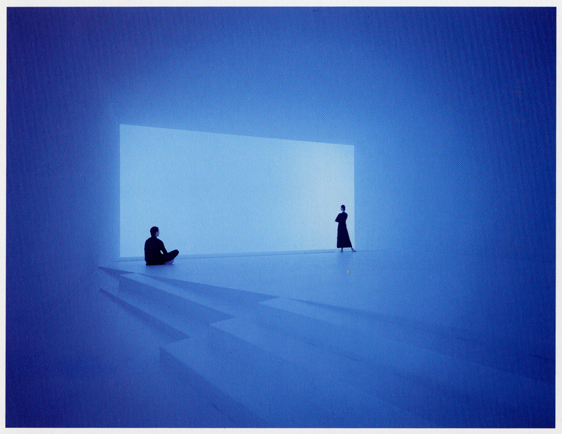
photo by Florian-Holzherr,©2021 James Turrell
Turrell often cites the Parable of Plato’s Cave to introduce the notion that we are living in a reality of our own creation, subject to our human sensory limitations as well as contextual and cultural norms. This is evident in Turrell’s over eighty Skyspaces, chambers with an aperture in the ceiling open to the sky. The simple act of witnessing the sky from within a Turrell Skyspace, notably at dawn and dusk, reveals how we internally create the colors we see and thus, our perceived reality.
Turrell’s medium is pure light. He says, “My work has no object, no image and no focus. With no object, no image and no focus, what are you looking at? You are looking at you looking. What is important to me is to create an experience of wordless thought.”
GANZFELDS
Turrell creates a similar experience of “Ganzfeld”: a German word to describe the phenomenon of the total loss of depth perception as in the experience of a white-out.
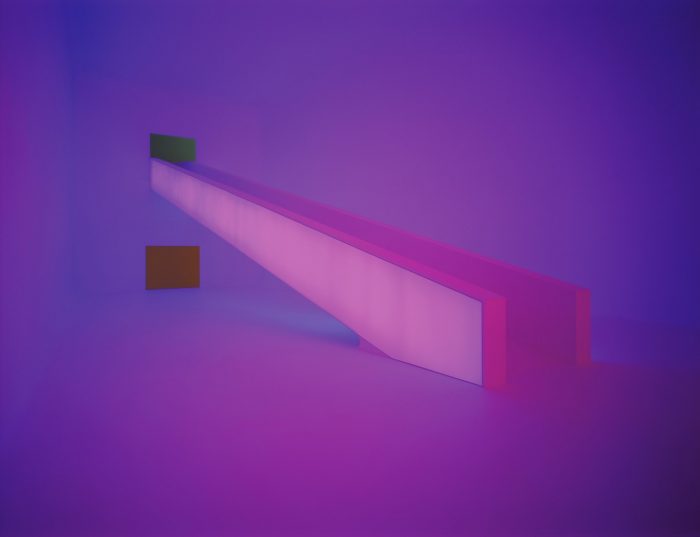
©2021 James Turrell
TALL GLASS / WIDE GLASS SERIES
A Turrell Tall Glass or Wide Glass piece is an aperture witihin which LEDs are programmed to change slowly over the course of several hours.
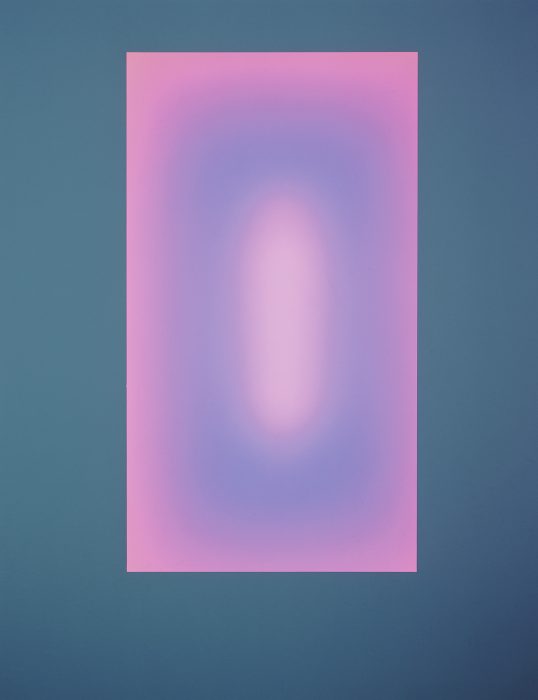
©2021 James Turrell
SHALLOW SPACE CONSTRUCTIONS
A Turrell Shallow Space is viewed from the rear of a large room in which controlled lighting challenges the viewer’s depth perception.
©2021 James Turrell
SKYSPACES
A Turrell Skyspace is a specifically proportioned chamber with an aperture in the ceiling open to the sky. Skyspaces can be autonomous structures or integrated into existing architecture. The aperture can be round, ovular or square.
©2021 James Turrell
VEILS
A Turrell Veil combines the use of natural and artificial light to create a slowly changing curtain, or veil, of light.
©2021 James Turrell
TUNNEL PIECES
©2021 James Turrell
SPACE DIVISION CONSTRUCTIONS
RODEN CRATER
©2021 James Turrell
“My desire is to set up a situation to which I take you and let you see. It becomes your experience.”
Roden Crater, located in the Painted Desert region of Northern Arizona, is an unprecedented large-scale artwork created within a volcanic cinder cone by light and space artist James Turrell. Representing the culmination of the artist’s lifelong research in the field of human visual and psychological perception, Roden Crater is a controlled environment for the experiencing and contemplation of light. It takes its place within the tradition of American landscape art that began in the 1960s, requiring a journey to visit the work in the remote desert with truly dark night skies.
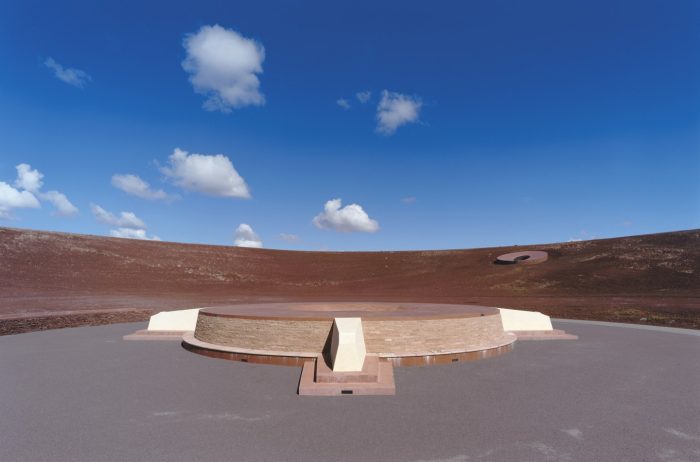
©2021 James Turrell
While minimally invasive to the external natural landscape, internally the red and black cinder has been transformed into special engineered spaces where the cycles of geologic and celestial time can be directly experienced. It will constitute a truly culminating phenomenon in world art.
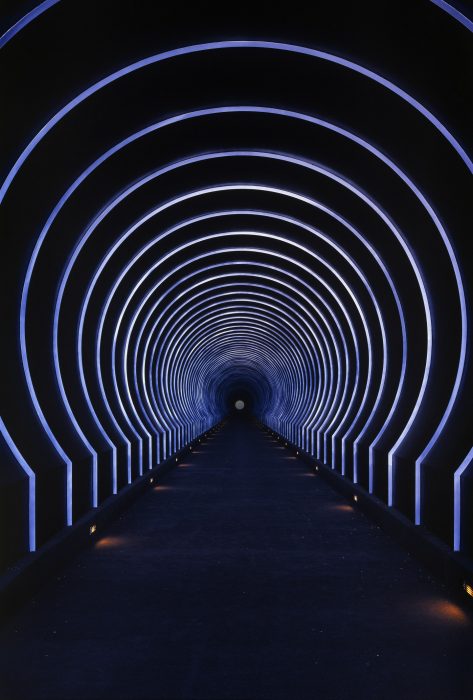
Roden Crater is a gateway to the contemplation of light, time and landscape. It is the magnum opus of James Turrell’s career, a work that, besides being a monument to land art, functions as a naked eye observatory of earthly and celestial events that are both predictable and continually in flux.
Constructed to last for centuries to come, Roden Crater links the physical and the ephemeral, the objective with the subjective, in a transformative sensory experience.As construction on Roden Crater is ongoing, it is presently closed to the public but it will soon be available to visit.

Source: James Turell
